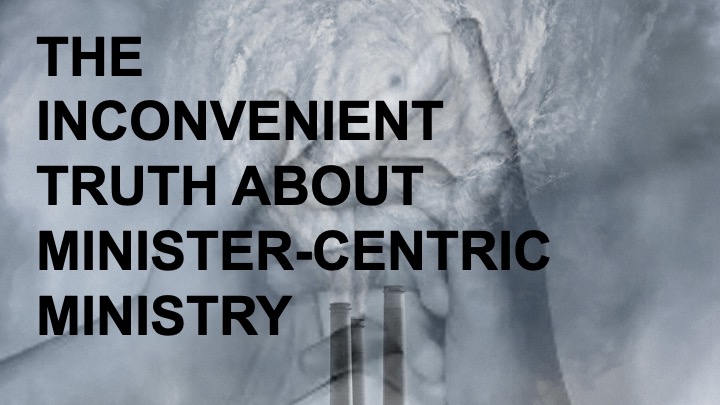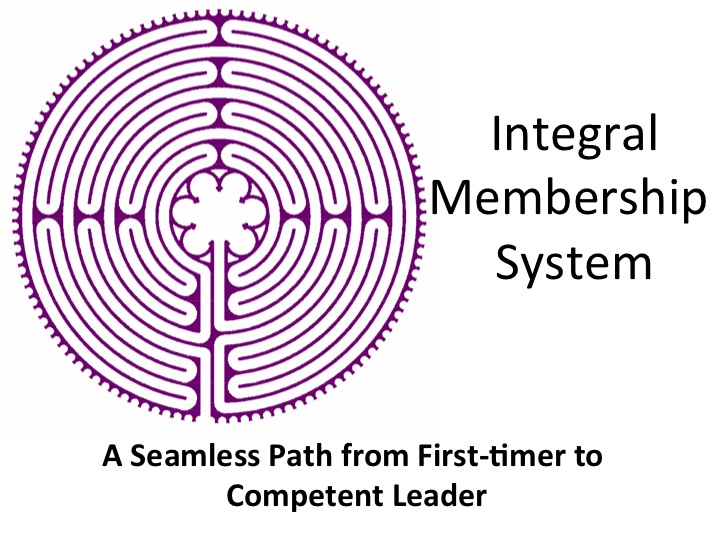Just as climate change and the advancement of ecological degradation is now recognized as our new environmental reality, the decline in congregational ministry is no longer in question.

We know that the aging out of the baby boomers and the Greatest Generation will render most established ministries unsustainable in two decades. We know that our churches and centers are no longer sustained by love offerings and tithes. We know that we need to attract young people–to grow the “middle earth” of our congregations, but we have little bandwidth or know-how to align with their demographic. We know that our current ministry practice, with the comings and goings of spiritual leaders, is wrought with dysfunction, drama, and “below the line” behavior[1].
These times have been described as a cataclysmic evolutionary catalyst – the dissolution of all things archaic and unsustainable. This includes church as we know it.
The funding of congregational ministry has been impacted by a number of challenges associated with present-day disruptions. Almost half of charitable dollars donated to church organizations 30 years ago are no longer with us in today’s economy. While the number of non-profits has doubled over the years, the amount of charitable dollars has basically remained the same. In other words, churches must now compete with, not only other religious organizations, but with educational organizations, the arts, the humanities, health care foundations, human services, the environment, animals, public and societal benefits.
The moment ministry leaders dip into their sense of not enough or become concerned about diminishing finances, they unknowingly make their mission about survival instead of fulfillment of purpose in the lives of the people. The challenge of transitioning from a ministry practice that is focused on and funded by people feeling spiritually fed, valued and special is quite different than a ministry practice geared to cultivating ownership and growing the emotional and spiritual maturity of its community members.
The minister-centric funding model is based on people feeling spiritually fed, who will then tithe to their source of spiritual nourishment (ostensibly, the church). However, when our supporters are dealing with their own sense of not enough, the ministry is impacted.
Since the minister-centric model of ministry is primarily funded by the tithes and donations of supporters and members, we can see how the practice of tithing has been impacted by a sense of not enough and how our strategies to “get more” actually create more insufficiency.
I wish to state at the onset that I’m not making a case against teaching tithing as a spiritual practice. I’m merely stating that the context in which we present those teachings is no longer sustaining our ministries.

Alban Institute founder Lauren Mead in 1974 actually predicted the gradual decline of congregational ministries. This is why he founded the Alban Institute to turn the tide against this decline. However, in 2014, the Alban Institute, the nation’s most experienced church growth and development consulting and publishing enterprise, closed its doors. The Alban Institute’s decline and closure signaled a troublesome development in the church industry. They went out of business because ultimately, they were unable to turn the tide of decline.
Keep in mind that decline means so much more than just simply dwindling numbers. It can mean significant changes in the well-being of congregations as they come to terms with the insufficiency on many different fronts. What happens when you’re experiencing a financial crisis and it impacts your staff and your community? It is not without consequence. A sense of not enough and an inability to turn the tide against these forces, underlie the gradual decline of our ministries. Suffice it to say that if nine out of ten churches are preoccupied with survival and making ends meet, living month to month like many who are in our communities, this then becomes the backdrop of our transformative message and our efforts to inspire people to make a positive difference in the world. In the midst of trying to do the job of ministering to our community and serving the greater good, we’re struggling with trying to fund our organizations.

There are other trends that impact the sustainability of congregational ministry. For instance, there is a growing demographic of adults that have nothing to do with organized religion. They are called the Nones. These are atheists, agnostics, and secular humanists. The percentage of adults in this category has increased from 8 percent 20 years ago to where it is now, over 25 percent. So, one quarter of all adults that are out there don’t have anything to do with organized religion.

And then there are the Dones. These are typically the baby boomers who are exiting congregational ministry. And that exit is increasing. They don’t really have a problem with church in general. They’re just tired – tired of the plop, pray and pay model of ministry, which is what the minister-centric model can become. Of course, these trends remind us of the need to attract new people, especially young people, into our congregations so that we can cultivate the next wave of leaders to help us grow beyond the year 2040.
So right now, with declining attendance and with the loss of revenues associated with our tradition of tithing, a tithing-based funding model seems to be impractical with respect to the cultural shifts that are occurring.
Nowadays, with a greater sense of not enough and the growing disparity between the haves and the have nots, it means the majority of people in our churches do not have the means necessarily to contribute at the same level of intensity and depth as we’ve enjoyed in previous decades. So as we move towards evolving our funding concept to shift out of a tithing-based system into an ownership-based system, we’re wanting to understand that this transition is going to have to contend with or rather reconcile the distinction between a small group of people who have the means to support the majority of the operations of the church, and a larger aggregate of congregants that are of limited means.

The phenomenon of Pareto’s Principle, the 20% of the congregation that provides 80% of the resources must be transcended because it fosters too much drama and politics within the church organization. Why? Because ministry leaders tend to move towards making sure that major stakeholders are happy with how things are going.
So as we move towards a different funding model and a different context for engaging people in supporting the ministry, we have to look at how we can reconcile the disparity between those who have means and those who don’t, by recognizing that there’s a growing gap between those of means and those who are struggling right now in this economy. So as we move towards a funding model that is based not on how much people give, but rather the intent behind their gift, the value of self-integrity becomes requisite to what we have coined: The Spiritual Cooperative.
How do we do this? How can we, within the dynamic of people of means and people of limited means, all participate equally in an effort to 100% underwrite the operational expenses of the ministry?
To address this issue, we must climb higher, moving beyond the story of separation and into the reality of interbeing and oneness. In the story of separation, people of means HAVE more than people of limited means. However, in the reality of Interbeing and oneness, ALL people have the capacity to BE more. Until we create a funding model based upon interbeing and oneness, we don’t actualize the field of infinite possibilities nor override the circuitry of the story of separation that is embedded in our nervous systems.
The story of the miracle of Jesus feeding 5000 followers found in all four Gospels, reveals how it might be possible to move from insufficiency and separation to more than enough and cooperation. According to scripture, after blessing the five loaves and two fishes, Jesus instructed his disciples to distribute the food to the multitudes. After all was said and done, twelve baskets of leftovers were collected.

Keep in mind that the metaphysical value of the story is linked to shifting out of separation, into oneness and interbeing. In the story of separation, people are not only hungry, but also protective of what little they do have. It was likely that no one was willing to expose what provisions they may have brought on this pilgrimage to be with Jesus. (You don’t travel to be with five thousand people without at least some provisions for food.) So imagine the disciples basically asking people to share whatever they had to share, and take what they needed to take. But to DO what they COULD.
Imagine as the disciples go through the masses, having someone pull out from underneath their robe some of the food they brought. Then others following the example. Little by little, like the Stone Soup story, envision the crowd shifting out of their separation into an awareness of oneness. Five thousand people coming together to bear witness to the bounty and the abundance—the more than enough that came amidst the seeming insufficiency and lack. Imagine if the real miracle was the inspirational moment that brought people into an experience of community-created bounty by transcending their individual sense of not enough and entering into a state of interconnection and generosity. We can create the very same experience in our ministries. It’s just that we have to have the right context to bring people into the value system of really coming from a place where they’re empowered to do what they CAN do.
Shifting to an ownership-based funding model requires introducing the value of self-integrity. In 1st tier minister-centric ministry, membership does not equal ownership. In other words, you can have a community of members, but not everyone is necessarily in ownership. Those who are not in ownership cannot partner with the leadership. This means that before an ownership-based funding model can come online, the value of self-integrity must underpin the value of ownership. Here’s why…
In the Integral Ministry Practice, we refer to the spiritual community as the spiritual cooperative. Within the spiritual cooperative there are people of means and people who struggle financially. Yet, regardless of one’s life situation, each individual can do what they CAN do with respect to taking on a portion of what it takes to underwrite the operational expenses of the ministry.
Imagine a spectrum of means. In any giving ministry there are people at both extremes and all along the spectrum. Yet each has the capacity to do what they CAN do with respect to the financial needs of the ministry. NOTE: Not everyone is necessarily doing what they CAN do, but rather just doing what they are doing. However, when called to be in integrity with one’s capacity to do what one CAN do with respect to the goal of 100% underwriting the operational expenses of the ministry, a new potentiality emerges.

When I pose this question to an audience of church leaders: “If everyone in your ministry was doing what they CAN do with respect to owning one’s share in the effort to 100% underwrite the operational expenses of the ministry, not what they are doing, but what they CAN do—can you see that you would have more than enough funds?” Without exception, each leader acknowledges that in principle there would be no lack, no insufficiency. So, the real issue is whether or not each person is in integrity with the call to ownership.
A retired person or someone with very limited means participates equally with those of great means when each does what they can do. With respect to the value of ownership, a person who can do $50 a month on a $2000 income might be in greater integrity and ownership than someone with great means who gives $500 a month on an income of $5000 a month.
When there is a common goal (100% underwriting the operational expenses of the ministry via automatic giving) placed before the spiritual cooperative in the context of each member doing what they CAN do (ownership & partnership), the funding goal is to shift those in the ministry that are in the culture of receivership to the culture of ownership. As more individuals live into the value of ownership, the phenomenon of Pareto’s Principle begins to diminish. For this to occur, there must be a means by which those in the culture of receivership can become owner / partners in time. What is needed is a seamless path from first-timer to competent leader. Otherwise, any movement from receivership to ownership happens by accident rather than through the organizational practice. In the Integral Ministry Practice this seamless path is call the Integral Membership System.

Love and Blessings, Gary
[1] See 15 Commitments of Conscious Leadership, a new paradigm for sustainable success: Dethmer, Chapman & Klemp